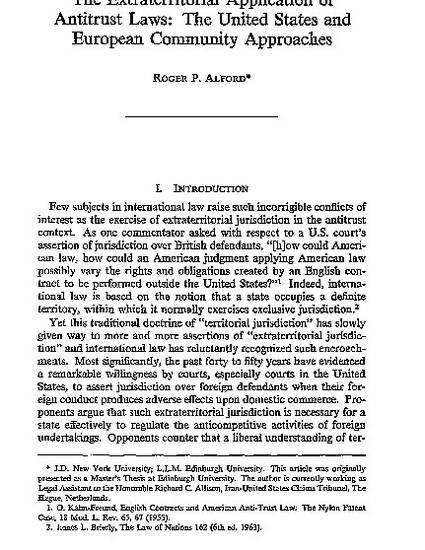
This Article compares the differing approaches of the United States and the European Community as they wrestle with the question of how to regulate foreign anticompetitive activity. More specifically, this Article highlights the distinctive features of the U.S. "effects doctrine" and the European Community's "implementation approach" and analyzes the differences that exist between the two systems. Only the U.S. doctrine openly provides for the consideration of international comity concerns, but both approaches have been used liberally to assert jurisdiction over foreign defendants. Part II of this Article provides a background to the subject by briefly outlining the traditional bases of prescriptive jurisdiction. Parts III and IV delineate the evolutions of the U.S. approach and the European Community approach to extraterritorial jurisdiction in the antitrust context. Part V compares and contrasts the two approaches and offers some modest estimations as to their respective strengths and weaknesses, including the validity of the distinctions they create. Part VI concludes by offering an interim solution to the problem of conflicting or concurrent competition enforcement: bilateral competition enforcement cooperation agreements such as that recently signed by the United States and the European Community.
Available at: http://works.bepress.com/roger_alford/3/
